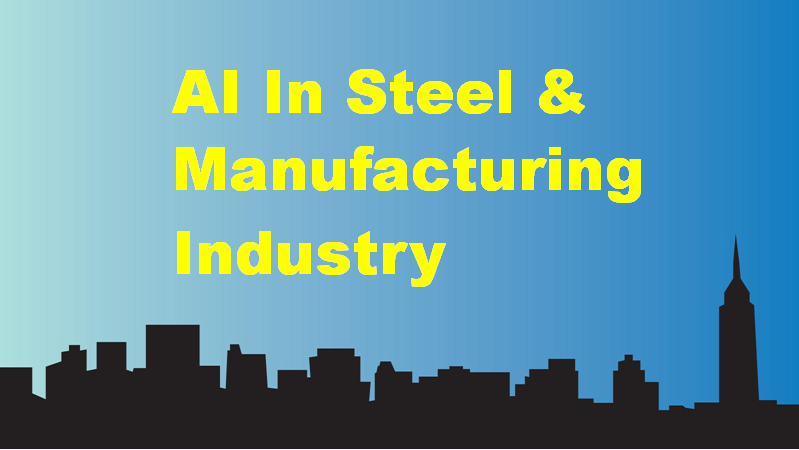
Use of AI In The Steel & Manufacturing Industry
Unlike various industries like retail, eCommerce or pharma, the role of AI and data science in the manufacturing business is not widely known. The data generated in the manufacturing business is hard to capture and therefore lags in leveraging AI in productivity and furthermore moves the KPI. Ramesh Kumar, head of analytics at Tata Steel, talked about how AI is being explored in the organization and what are some of the difficulties that come into picture while deploying AI. He is presently driving a huge scale AI Implementation in manufacturing across Tata Steel.
Challenges while Deploying AI In Manufacturing
Kumar shared four huge challenges that include the AI function in the manufacturing sector.
Data
Data is generally generated from sensors deployed at different processes and capacities in the manufacturing industry and plays a crucial role in deploying and producing data. It, therefore, requires careful installations, storage and examining of data to source data in the manufacturing industry. To build and deploy deep learning and machine models, it is the data gathered from these sensors that play a significant role. Further to generating data, it is fundamental to store, and the audit is wisely done to avoid any deviations in results.
People
People are the source of knowledge, various key indications, processes and functions. They structure a crucial asset to drive data science-based applications in the field. Kumar shared that most steel and manufacturing industries are located far away from the nodal points and are regularly challenging to select or employ teams at these areas. Setting up a team is the main challenge.
To overcome this, Kumar shares that Tata Steel runs different training programs to familiarize people about various tools and technologies utilized in the process. For example, to communicate data science terminologies with the ground-level administrator to get the necessary deliverables from them can be a challenge. Consequently, these initiatives help in communicating data science in layman terms.
Process
The second test in the manufacturing industry is the process. It for the most part takes a long time to develop processes in the manufacturing area. Data changes every regular interval. For example, because of COVID, the manufacturing capacity at Tata Steel dropped extremely, which led to a decrease in the data-generated through sensors. The essential data that was gathered on which models were trained were of no utilization, and they had to be trained once more.
Outer factors such as climate, raw materials, the property of coal and others may likewise affect the process and the last output. There are a great many sensors that are installed across processes, the data from which are trained from historical data, however deviations in it might cause the models to consider irrelevant. This is the place where data arrangement comes into the picture, which is extremely critical. Further, any inherent change in the system, if the error is not modified, will lead to unexpected outcomes in the model.
Technology
Technology, once more, is a challenge yet not as severe as others. The availability of publically available libraries and tools make it simpler for data scientists to investigate and play around with data.
Use Cases In Tata Steel
Kumar shared that the data science work at Tata Steel runs on three standards — simplify, synergy and scale. Further clarifying this, Kumar said that by ‘simplifying’ it implies that data science should be communicated in a manner for a common person to understand the technicalities. ‘Synergy’ is place where data from various domains such as R&D, processes and machines meet together to get into the whole working, while, the ‘scale’ is where one model should have the potential for horizontal deployment.
Discussing about the use cases, Kumar shared that they use techniques such as regression models in machine learning, predictive modelling, neural networks, gradient boosting, among others to make understanding from various data points. He further shared that they have models at each workstation, which are completed stitched together to make it work and produce the desired results. He also shared that vast majority of the models work on adaptive learning, i.e., they gain from the past mistake and keep updating taking care of any deviations later on.
The associated machines and interdependency of the cycle in a mind boggling fabricating climate make it hard for AI to discover potential outcomes in the area and measure its incorporated effect. In any case, they are working with industry specialists and even scholastics to achieve better utilizations of AI-empowered assembling.
The associated machines and interdependency of the process in a complex manufacturing environment make it hard for AI to find possibilities in the sector and measure its integrated effect. However, they are working with industry specialists and even academics to achieve better applications of AI-enabled manufacturing.



